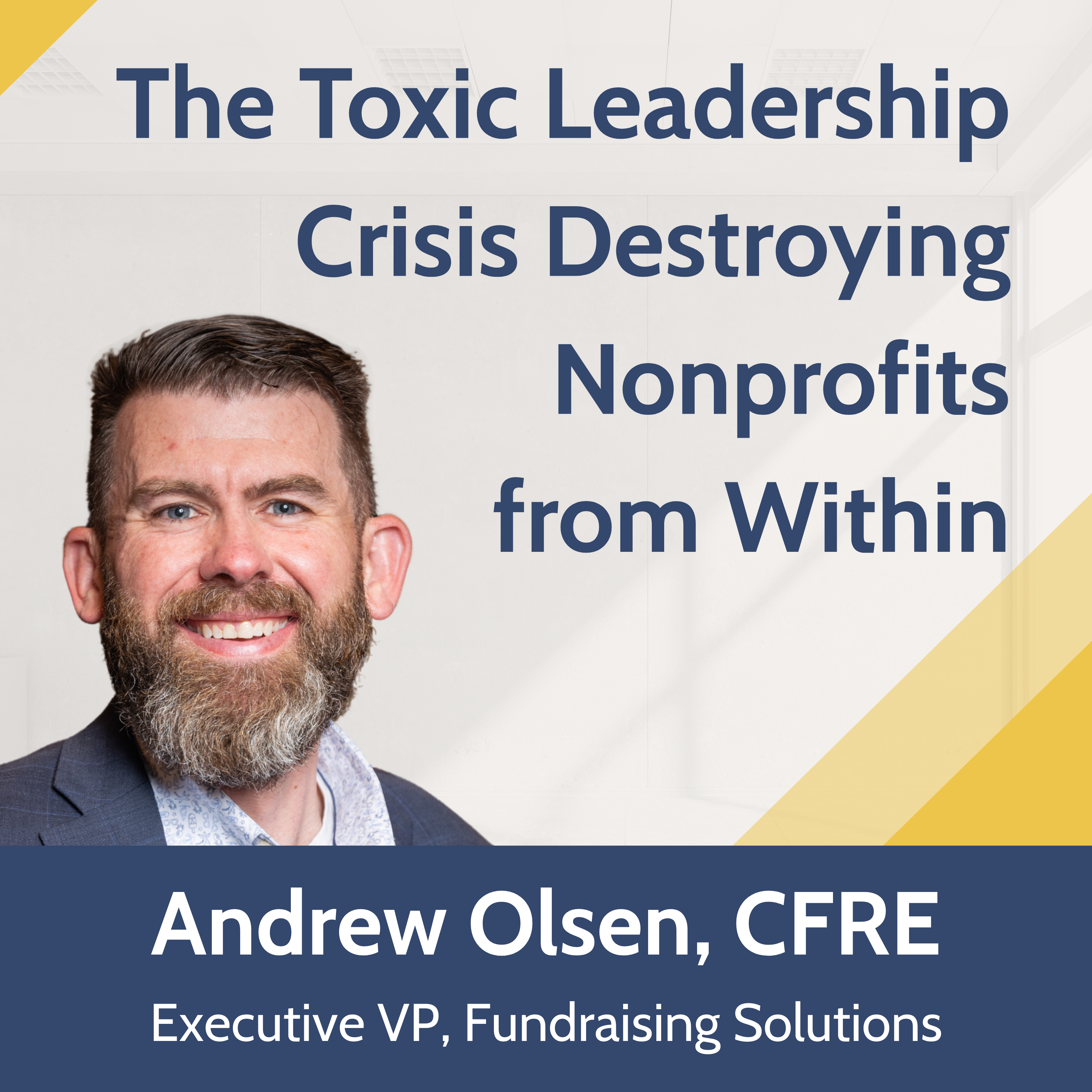After 25 years in the nonprofit sector and working with nearly 1,000 organizations, I've witnessed something heartbreaking: toxic leadership is systematically destroying missions from the inside out, and most organizations won’t even admit that it's happening.
When I wrote my last book "101 Biggest Mistakes Nonprofits Make," one chapter focused specifically on toxic behavior in the workplace. The research behind that chapter (and much of the book) came from meeting with about 80 nonprofit organizations over 18 months. Each initially contacted me saying they had a "fundraising problem." But in almost every case, the real issue wasn't lack of money or donor interest—it was toxic leadership creating environments where good people couldn't do impactful work.
The Cognitive Dissonance Problem
What makes toxic leadership particularly devastating in our sector is the cognitive dissonance it creates. We expect organizations dedicated to helping others to treat their own people well. When a ministry or charity publicly champions caring for the vulnerable while allowing staff to be harassed, belittled, or discriminated against internally, it creates a shell shock that's uniquely damaging.
I've seen this pattern repeatedly: organizations serving diverse communities led by boards of nine white men and one white woman, calling that "diversity." Or organizations helping people escape addiction while enabling toxic behavior from high-performing fundraisers who terrorize colleagues.
The High Performer Exception
One of the most dangerous patterns I encounter is what I call "the high performer exception." Organizations tolerate incredibly toxic individuals because they bring in revenue or possess specialized expertise. Leaders convince themselves they can just move the problem person to a different department and that somehow will resolve the issue.
I tell leaders that this is like a doctor saying, "We found cancer in your lung, but we're not going to remove it—we'll just move it to your lymph nodes and hope it improves." Any patient would run from that physician, yet organizations make this exact decision with high-performing toxic staff every day.
The Board Meeting That Changed Everything
Early in my career, I witnessed toxic leadership destroy an organization in real time. I was invited to present to a nonprofit board in Ohio, but fifteen minutes in, three board members marched in late and immediately began berating the CEO. They attacked him and compared him to the previous CEO, who had been gone from the organization for more than a decade! The meeting got so heated that it brought the executive assistant to tears right in the meeting.
The verbal assault was so severe I folded my notebook and left the room.
The board chair followed me to the parking lot, asking how I could help them, “now that I’d heard everything” (that was maybe the understatement of the year).
I had to laugh: "You're not aligned on anything. I can't help you at all until everyone in that room agrees on the one problem you need to solve – and from what I’ve just seen, that has nothing to do with your fundraising."
That toxic board members had controlled the organization for 15 years through tantrums and intimidation. They had no term limits, no removal process—they were held hostage by emotional dysfunction. This was 20+ years ago. The organization still exists today, and sadly, it’s in no better shape today than it was the day I walked out of the board meeting.
The Real Cost
Toxic leadership doesn't just hurt people—it destroys mission effectiveness. When staff turnover occurs every 12-18 months, when good people leave because of hostile environments, when high performers leave because they’re tired of the mental and emotional weight of working inside your organization, and when donors witness internal dysfunction, the cause suffers immeasurably.
Breaking the Cycle
The solution requires courage. Leaders must get comfortable having uncomfortable conversations. Boards need to step up and embrace the creation of healthy and thriving culture in their organizations. Organizations must set clear behavioral expectations and enforce them consistently, regardless of someone's fundraising ability, seniority or donor connections.
Boards must have the backbones necessary to address this when the toxicity resides (as sadly is too often the case) in the C-suite instead of simply rubber stamping the executive’s behaviors. And organizations must have bylaws that allow them to remove toxic board members when the problem behaviors exist at the board level.
Most importantly, we must remember that our missions don't excuse toxic behavior. If we can't deliver services while caring for our own people, we've fundamentally failed our calling.
The choice is simple: address toxicity directly or watch it metastasize until it kills everything you've worked to build.
In Conclusion
Toxic leadership is not a side issue—it’s an existential threat to the nonprofit sector. If our organizations are to remain credible and effective, we must confront dysfunction with the same urgency we bring to the communities we serve. Cultures of fear, ego, and complacency cannot coexist with missions built on compassion and justice. True leadership requires humility, accountability, and the courage to prioritize people over performance metrics. The health of your mission will always mirror the health of your culture—and if we truly want to change the world, that change must start within our own walls.
Our team helps level up leadership for our partners every day and we can help you too. Email me at andrew@dickersonbakker.com, or call or text me at 612.201.1967 if you want to talk about how to gain clarity for your organization.


